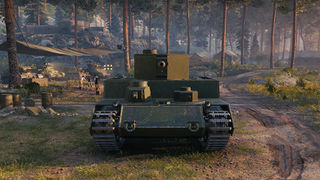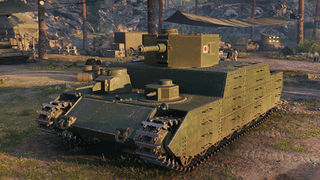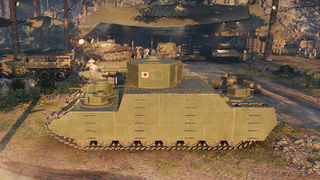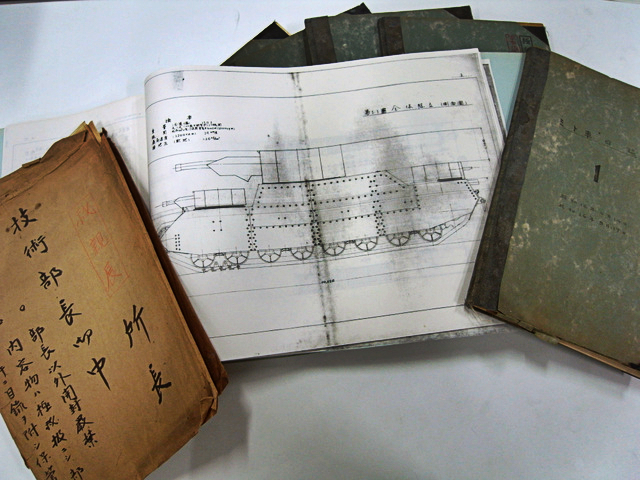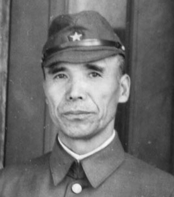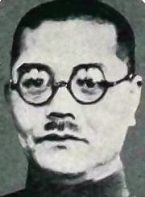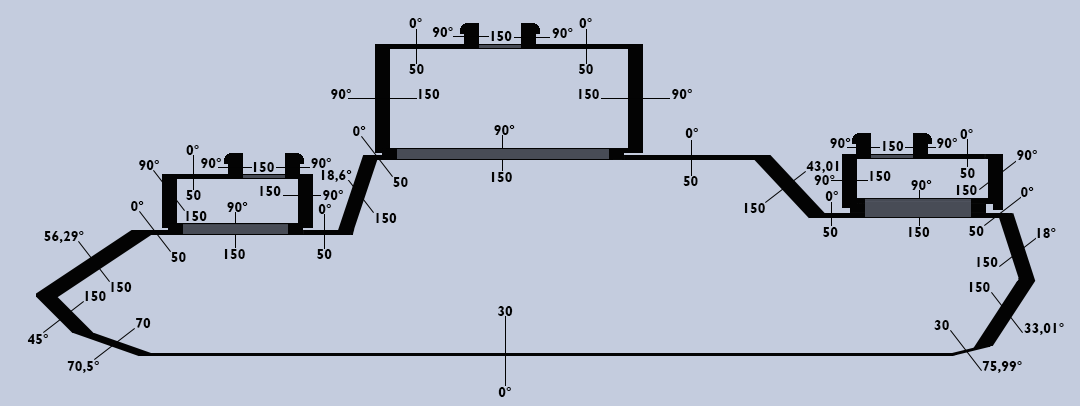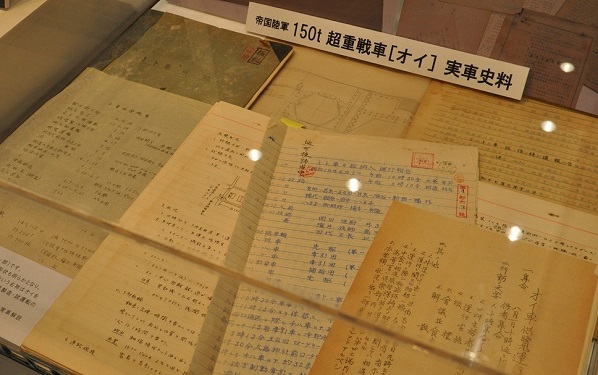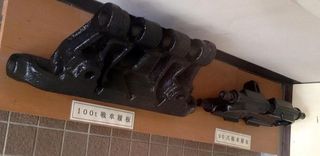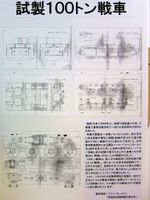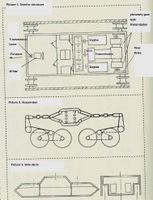O-I Experimental
| Revision as of 06:29, 27 October 2016 | Revision as of 06:43, 19 January 2017 | |||
| Line 11: | Line 11: | |||
| |InTheGame_pros= | |InTheGame_pros= | |||
| ? | + | - Brutally high alpha damage even compared to some heavies in higher tier, One of the Best tank in class/tier | ||
| ? | + | |||
| ? | + | - Good reload time for its alpha damage, essentially providing good DPM with minimal exposure | ||
| ? | + | |||
| ? | + | - Its stock grind is not painful, The stock gun does sightly less damage and penetration than top gun | ||
| ? | + | |||
| ? | + | - Good top speed that is easily reached on flat ground | ||
| ? | + | |||
| + | - With its massive weight (100 tons) It can deal extreme ramming damage when coupled with the aforementioned speed | |||
| + | ||||
| + | - Very good view range | |||
| + | ||||
| + | - Very high ammo capacity | |||
| + | ||||
| + | - It can be used to grind XP to researching radios and engine to share the same module as the Late tier of O-I series. | |||
| |InTheGame_cons= | |InTheGame_cons= | |||
| ? | + | - Largest tank ever at Tier 5, easy to hit, and camo is very poor | ||
| ? | + | |||
| ? | + | - While armor protects well against tier 3s and some tier 4s, even angled it struggles against same and higher tiers | ||
| ? | + | |||
| ? | + | - Poor premium ammo pen; being only 20mm higher than the regular AP shell | ||
| + | ||||
| + | - 10cm gun has low shell velocity, accuracy and a long aim time | |||
| + | ||||
| + | - Like all Japanese Giant Tanks; Its ammo rack is fragile and large, It can be damaged in few side hit. | |||
Revision as of 06:43, 19 January 2017
| |
This article requires additional modification. The design and/or content of this article do not conform to wiki standards.
|
O-I Experimental
Mouse over "
[Client Values; Actual values in
| 445,000 |
| 920184 HP Hit Points |
| 99.1/100.530/105.5 t Weight Limit |
- Commander
- Gunner
- Driver
- Radio Operator
- Radio Operator
- Loader
| 11001200 hp Engine Power |
| 25/12 km/h Speed Limit |
| 2022 deg/s Traverse |
| 11.140 hp/t Power/Wt Ratio |
| NoNo Pivot |
| // mm Hull Armor |
| 125/75/75125/75/75 mm Turret Armor |
AP/HEAT/HE
AP/HEAT/HE Shells |
130/4800/240
130/4800/240 Shell Cost |
| 360/360/440360/360/440 HP Damage |
| 60/140/6060/140/60 mm Penetration |
|
5.71 r/m ▲
5.71 r/m Standard Gun ▲ Rate of Fire Standard Gun |
|
2055.6 ▲
Standard Gun
▼
Standard Gun
▲
2055.6 Standard Gun ▲
Standard Gun
▼
Standard Gun
▲ Damage Per Minute Standard Gun |
|
0.54 m ▲
0.54 m With 50% Crew: 0.669 m ▲ Accuracy With 50% Crew: 0.669 m |
| 2.9 s 2.9 s Aim time |
| 2020 deg/s Turret Traverse |
| 360° Gun Arc |
| -10°/+20°-10°/+20° Elevation Arc |
| 120120 rounds Ammo Capacity |
| 2020 % Chance of Fire |
| 360 m 360 m View Range |
| 300 m 425 m Signal Range |
V
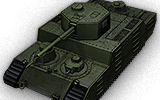
445000
The O-I Experimental is a Japanese tier 5 heavy tank.
Development of this superheavy tank was initiated by Colonel Iwakuro from the Army Ministry of Japan. The project was carried out by the Mitsubishi company, therefore the vehicle became known as the Mi-To. In the army, the tank was designated the O-I. Details of the project are largely unknown.
Even after getting nerfed the O-I Experimental is an extremely powerful vehicle. Its 10cm gun with its whopping 300 alpha damage as well as the ability to pull of almost KV-5 levels of ram damage makes it a respectable opponent even for tier 7s. When top tier, it is a steamrolling killing machine, causing fear to any other tier 5 tank. Despite its gigantic size (not much smaller than the Maus!) and 100 ton mass (twice or even 3 times as heavy as other heavies of the same tier) the O-I Exp's armor is not very good. Instead, it trades that for absolutely unreal mobility for such mass, having the ability to keep up even with medium tanks!
The O-I Experimental marks the end of its Japanese heavy line.
Modules / Available Equipment and Consumables
Modules
| Tier | Engine | Engine Power (hp) |
Chance of Fire on Impact (%) |
Weight (kg) |
Price (
| |
|---|---|---|---|---|---|---|
| VII | 2x Kawasaki Type 98 V-12 (550) | 1100 | 20 | 1020 | 51000 | |
| VIII | 2x Kawasaki Type 98 V-12 (600) | 1200 | 20 | 1020 | 77500 |
| Tier | Suspension | Load Limit (т) |
Traverse Speed (gr/sec) |
Rmin | Weight (kg) |
Price (
| |
|---|---|---|---|---|---|---|---|
| IV | O-I Experimental | 100.5 | 20 | B/2 | 20000 | 4000 | |
| V | O-I Experimental Kai | 105.5 | 22 | B/2 | 20000 | 11400 |
| Tier | Radio | Signal Range (m) |
Weight (kg) |
Price (
| |
|---|---|---|---|---|---|
| II | Type 94 Mk. 4 Otsu | 300 | 40 | 0 | |
| IV | Type 94 Mk. 4 Hei | 350 | 90 | 2350 | |
| VI | Type 96 Mk. 4 Bo | 425 | 50 | 14000 |
Compatible Equipment
Compatible Consumables
Player Opinion
Pros and Cons
Pros:
- Brutally high alpha damage even compared to some heavies in higher tier, One of the Best tank in class/tier
- Good reload time for its alpha damage, essentially providing good DPM with minimal exposure
- Its stock grind is not painful, The stock gun does sightly less damage and penetration than top gun
- Good top speed that is easily reached on flat ground
- With its massive weight (100 tons) It can deal extreme ramming damage when coupled with the aforementioned speed
- Very good view range
- Very high ammo capacity
- It can be used to grind XP to researching radios and engine to share the same module as the Late tier of O-I series.
Cons:
- Largest tank ever at Tier 5, easy to hit, and camo is very poor
- While armor protects well against tier 3s and some tier 4s, even angled it struggles against same and higher tiers
- Poor premium ammo pen; being only 20mm higher than the regular AP shell
- 10cm gun has low shell velocity, accuracy and a long aim time
- Like all Japanese Giant Tanks; Its ammo rack is fragile and large, It can be damaged in few side hit.
Performance
Being a very large replacement for the poorly armored Type 95 ,The O-I Experimental is a very strong tank. 300 alpha is unheard of for tier 5 heavies since the removal of 107mm on the KV tank, and the only other tank to have 300 alpha at tier 5 is the French S-35CA with the 105mm gun. Coupled with surprisingly good mobility and extremely good gun handling, it is extremely good at peek-a-boom and midrange snapshots. The O-I Exp is often a priority target because of its threatening gun, huge size and surprisingly weak armor, so taking hits is better suited for some other heavies like the KV-1, although when top tier the O-I Exp is still capable of bouncing some shots, especially from lower tiers. A relatively small turret and excellent -10 depression can somewhat negate massive size if you poke from ridge lines. Excellent mobility for such mass also allows the O-I Exp to play as massively overgrown medium with a 100mm gun. The O-I Experimental weighs twice as more as almost any other heavy from tier 5 to tier 7, so it can safely ram anything and do gigantic damage except to other Japanese heavies. When going downhill, the O-I Exp can destroy any same or lower tier tank, including heavies from full HP, and even some mediums and tank destroyers from a tier higher!
All in all, the O-I Exp has a very unique and unusual playstyle. It is still one of the strongest tier 5 tanks in the game. The O-I Exp is also one of the very best non-premium credit makers in the game, due to the ability to deal boatloads of damage and rarely needing to use premium shells because there aren't many tanks that normal AP cant penetrate. One last thing to note, despite similar looks, its bigger brother, the O-I, plays completely differently.
Early Research
Due to the fact that you can mount everything with the stock suspension, it is recommended that you start with getting the XP for the guns. try to get the 10 cm if you can. Top engine, suspension, and radio is secondary.
The two 7.5cm may already be unlocked from the tier 5 medium Chi-Nu. Otherwise, you have the stock 12cm derp gun to use. The stock derp gun is similar to the Russian U-11 122mm derp gun in performance, but has noticeably slower shell velocity; therefore players should try to get close to the enemy to have a decent chance of hitting the enemy. The stock 12cm leads to both the 75mm guns and the main feature of this box of a tank: the 10cm. The 10cm cannon is required to unlock the O-I and is well worth the upgrade as it is the only heavy tank that does 300 damage per shot in tier 5, and does it with good precision, fire control, and good reload rate to boot. The only drawback of this gun is that the premium AP round does not offer significant penetration advantage over the standard AP, and may run into trouble facing heavily armored tanks in higher tiers, so be sure to read the teamlist for expected enemies at each map location and plan ahead.
Stock suspension is good enough to handle every module, but upgraded one can make the tank noticeably more nimble. Consider using the 120 mm Short barrel until you get enough Xp to get the 10 cm, as that should make the grind worth the effort. But, If you want to use the 75 or 76 mm gun first, you can, but, this course of action is not recommended. The upgraded engine is quite expensive in terms of XP, but this engine carries over right up the line of heavy tanks. It only adds 9% engine power so it's marginal if it is worth the investment. The radios also carry over up the line.
Gallery
Historical Info
History and development
After 1939, the Imperial Japanese Army quickly came to realize that previous forms of mechanized warfare were proved inefficient after their defeat at Khalkhin Gol.
Development of the super-heavy project was spearheaded by Colonel Hideo Iwakuro, the head of the Ministry of War of Japan (陸軍省 Rikugun-shō). Iwakuro opposed Japan’s advances towards the Soviet Union in 1939, and with the Japanese defeat, he decided to initiate a project to construct a heavily armored tank capable of withstanding large-calibre field cannons. Iwakuro assigned Colonel Murata of the 4th Technical Research Group to design and construct the super heavy tank in 1939. Colonel Murata noted Iwakuro’s words as described;
「満州の大平原で移動トーチカとして使えるような巨大戦車を作ってほしい。極秘でだ。」
“I want a huge tank built which can be used as a mobile pillbox in the wide open plains of Manchuria. Top secret.”
「今の戦車の寸法を2倍に延ばして作れ。」
“Make the dimensions twice that of today’s tanks.”
The 4th Technical Research Group began designing the super-heavy vehicle throughout 1940, attempting to meet Colonel Iwakuro’s vague instructions on the ultimate goal of the project. By March 1941, the research group had finished initial tank design and was ready to begin construction. The following month, a group of pre-selected engineers were chosen to partake in the building of the super-heavy tank. One recorded engineer was Shigeo Otaka, who stated they were sent to the 4th Technical Research Group’s previous headquarters in Tokyo. There, they were guided through a barracks containing multiple small fitting rooms, where they were to conduct meetings and reports on the progress of construction of the super-heavy vehicle. Towards the end of the barracks facility was a fully-enclosed room devoid of windows, with soundproofed walls to prevent external personnel from overhearing discussions related to the project. Each officer present possessed a portion of the project’s blueprint, which, when assembled, projected the full design of the tank, labelled "Mi-To". The name originated from a collection of the Mitsubishi industry and the city, Tokyo; given to the vehicle to uphold secrecy of the tank’s project.
The chosen engineers voiced their concerns regarding the Mi-To’s design noting that previously, the largest-sized Japanese tank had been the prototype Type95 Heavy in 1934. Issues that had been noted with heavy tank experiments in the years preceding the Mi-To showing Japan’s generally unsuccessful testing on multi-turreted vehicles exceeding the weight of standard armored vehicles. However, with the threat of a second Russo-Japanese conflict becoming more apparent, the project continued despite the engineer’s doubts on the size and mobility of the vehicle.
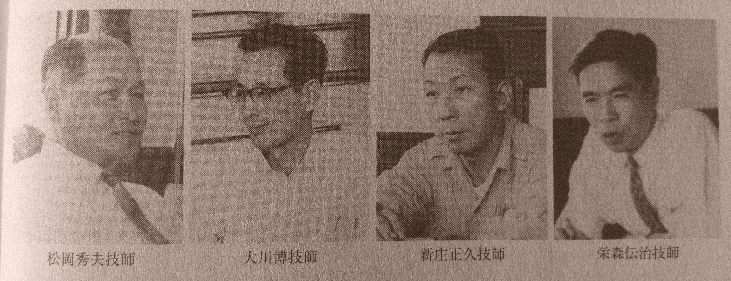 Four engineers who survived to record the dealing had with the project
Four engineers who survived to record the dealing had with the project
On April 14th 1941, the engineers began the construction of the Mi-To under secretive means. This entailed privately-made mechanical parts and equipment being shipped to the construction zone. Colonel Murata’s original concept was to complete the super-heavy tank three months after the initiation of Mi-To’s construction. This, ultimately, did not come into fruition; as technical issues on the project began to arise. Due to the limitation on material consumption by the government, the amount of parts that could be secretly shipped-in began to dwindle. By the first month of construction, essential construction resources had been depleted and the issues with the vehicle’s cooling system further caused delays. The construction of the Mi-To was postponed until January 1942, a delay of nine months.
After the Mi-To’s construction was resumed, the hull was completed on February 8th 1942. The tank had reached near-completion and was being prepared for mobility testing. Mitsubishi built the four turrets for the tank in May of the same year. Initial assembly of the tank’s armament took place soon after the turret’s superstructures were completed. However; the project once again did not have the necessary resources needed for the few remaining parts required for the final assessment. Due to this, the primary turret was removed as it lacked a 35-millimetre-thick roof plate, which had not yet arrived. Thus, the project was put on standby, until further development could continue. The total weight of the vehicle at the time was 96 tons, due to the lack of remaining structural plates and absent 75mm bolted-on armor.
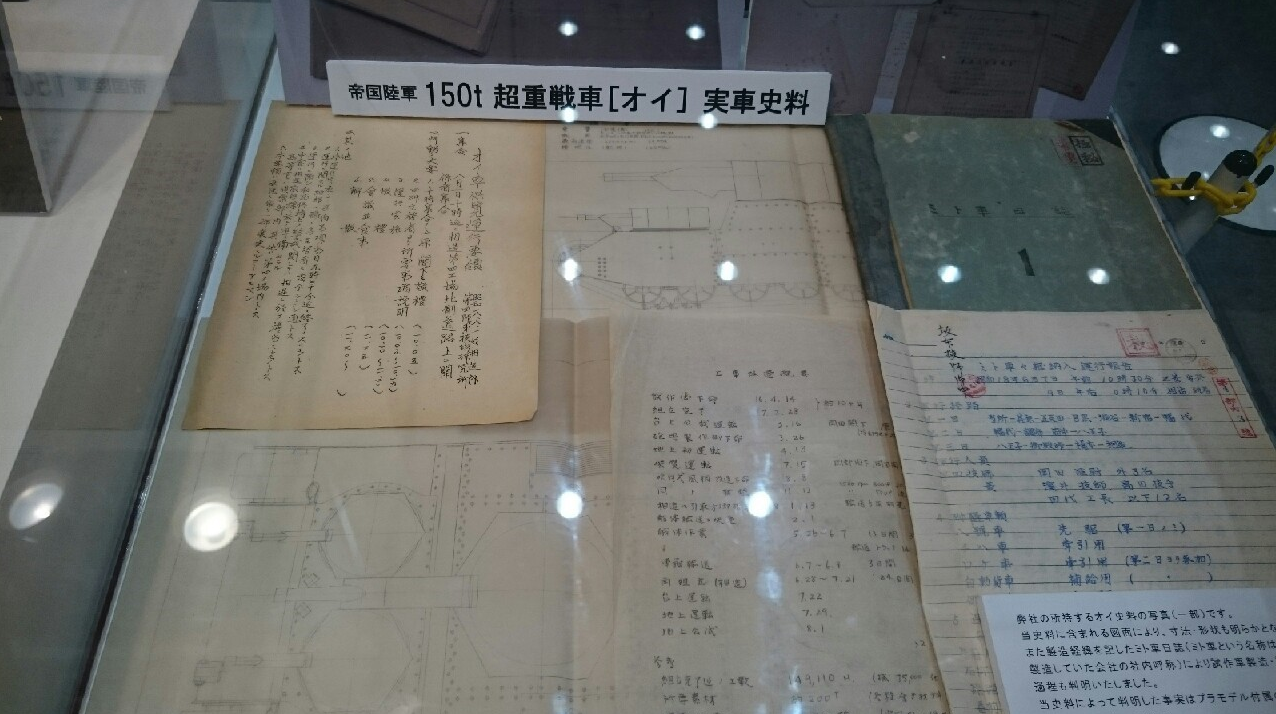 O-I documents previewed by FineMolds
O-I documents previewed by FineMolds
The date on which the construction of the tank resumed is unknown, although active testing of the tank was scheduled for late 1943. The tank was unveiled to the Imperial Japanese Army’s highest command in 1943, and received a name change to O-I. This followed Japanese naming convention (O translating to Heavy, I for First, making it "First Heavy") that was standard. In his place was Lieutenant Colonel Nakano, Murata's assistant and colleague. Tomio Hara, head of the Sagamia Army Arsenal, was also present. Following the demonstration, senior officials within the IJA requested that field trials begin in August of the same year. The tank was disassembled at 2:00 AM one night in June of 1943 and sent to the Sagami Army Arsenal in Sagamihara, 51 kilometres from Tokyo. The vehicle arrived at the depot in June, and was reassembled and tested on the 1st of August.
On the day of the trials, the O-I performed satisfactorily until the second hour of the tests. While manoeuvring on off-road terrain, the tank sank into the ground by up to a meter; attempts at traversing the hull to extricate the vehicle proved fruitless, resulting in further sinking due to the vehicle’s suspension coils compressing. The tank was eventually towed out, and further testing was continued on concrete. However, the earlier damage to the suspension resulted in vehicle’s movement damaging the concrete, which in turn, further damaged the suspension bogies to the point that further testing could not continue. The trials were postponed, and later cancelled the following day.
Nevertheless, the trials conducted at the testing field were considered to be a success, and the vehicle was deemed ready for use in spite of its flaws. The engineers began disassembly of the tank on the 3rd of August due to resources being limited and the inability to maintain the tank in the field. Disassembly of the tank was completed on August 8th. Two days later, the engineers noted in a log that they were to inspect the parts and conduct research to fix the issues the O-I would face.
The fate of the O-I after its field-trials which took place on the 1st of August is unclear. Russian reports claim the Japanese were in possession of a wooden O-I mock-up mounting a Daimler-Benz DB 601A engine in 1945, however other sources point to the scrapping of the remaining parts of the same year. The remains of the O-I reside at the Wakajishi Shrine, with a track link of the prototype still present.
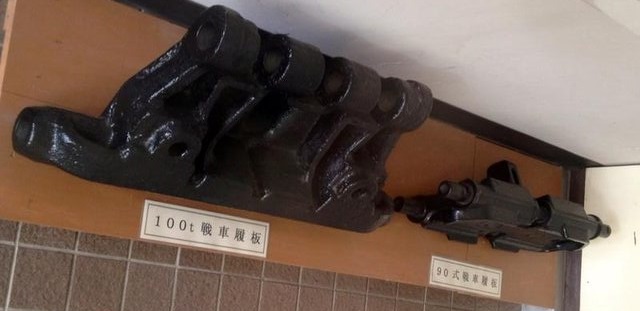 Remaining track link of the prototype O-I tank
Remaining track link of the prototype O-I tank
Design The O-I was conceived out of the necessity to produce an armored vehicle capable of withstanding modern weaponry being able to return fire with similar firepower. The O-I was designed to act as a mobile pillbox, supporting infantry and mechanized groups along the border of the Soviet Union. The tank had a length of 10.1 meters, width of 4.8 meters, and a height of 3.6 meters. The dimensions of the vehicle closely matched those of the Panzer VIII Maus. The tank was envisioned to have a standard thickness of 150 millimeters front and rear, in order to protect against common anti-tank weapons of the time, yet it was constructed with armor 75 millimeters thick. However, an additional armor plate could be bolted on to bring the total thickness of the armor to 150 millimeters. The use of additional armor allowed for ease of construction and transportation, while also providing the tank with additional defense. Side armor on the hull superstructure was 70 millimeters thick. The additional armor plates were 35 millimeters thick, but armor surrounding the suspension was only 35 millimeters thick. This made the tank’s theoretical armor on the side 75 millimeters. There were eight wheel-supporting beams located on both sides of the suspension area which added an additional 40 millimeters of armor to specific locations on the side of the O-I. 40 ladder pieces were placed around the tank to provide crew with the ability to climb onto of the vehicle with ease.
The two 47mm cannons used in the two frontal turrets were also modified to fit the armor layout of the tank. The weapon’s barrels were reinforced with steel to secure them to the tank, due to the standard gun not adequately fitting into the turret.
The tank was both designed and built with two inner armor plates to divide the interior into three sections; walls with two doors each and an ultimate thickness of 20mm. This allowed the crew and modules to remain relatively safe while the structure was kept safe with supporting stands. These supports allowed the interior armor plates to stay stable and also prevented collapse. Inside the O-I were two Kawasaki V-12 engines, both located in the rear, parallel lengthwise, to give room for the rear turret operator and transmission. The transmission copied that of the Type97 Chi-Ha’s, but used larger parts and gears making the total weight heavier. The vehicle had a coil spring system, with eight 2 wheeled boggies, totalling 16 individual wheels.
General
Name: O-I
Factory: Private - Mitsubishi
Units Produced: 1
Type: Super Heavy Tank
Year Built: February 8th 1942
Length: 10.1 m
Width: 4.8 m
Hull Width: 4833 mm
Height Full: 3.6 m
Turret height: 1065 mm
Track width: 800 mm
Track Pitch: 300 mm
Track Thickness: 58 mm Half, 108 mm Full
Total Weight: 150t (96t prototype)
Engine Name: Type98 V12 Kawasaki Power: 550hp (1100hp total with second engine) Weight: 1020kg Gears: 6 Lubricant type: Oil Maximum speed: 40kmh onroad (prototype), 29.4 kmh (design) onroad
Hull Hull height 2530 mm Hull Width: 4833 mm Upper Front Plate: 150mm @ 56,29° Lower Front Plate: 150mm @ 45° Lowest Front Plate: 70mm @ 70,5° Side plate: 35mm @ 0° + Bolted 35mm @ 0° Superstructure side plate: 75mm @ 0° Upper Rear Plate: 150mm @ 18° Lower Rear Plate: 150mm @ 33,01° Lowest Rear Plate: 30mm @ 75,99° Top plate: 50mm @ 0° Bottom plate thickness: 30mm @ 0°
Turret Primary Turret height: 1065 mm Turret side faces: 150mm @ 90° Turret top: 50mm @ 0°
Armament
Model: Type96 15cm Howtizer
Weight: 4,140 kg
Elevation: -5 ° to + 20 °
Amount of ammunition: 100+
Type of ammunition: Type95 APHE, Type92 Spifire HE, 4th Year HEAT
Ammunition Types
Name: Type95 APHE
Shell weight: 36000g
Fire speed: 540m/s
Penetration: 125mm @ 230m, 120mm @ 510m, 112mm @ 755m, 102mm @ 1000m
Explosives: 6150g
Name: Type92 Spifire HE Shell weight: 36000g Fire speed: 540m/s Explosives: 6150g
Name: 4th Year HEAT Shell weight: 21040g Fire speed: 650m/s Explosives: 6150g
Secondary Armament Model: Type1 47mm Experimental Weight: 600(+/-) kg Elevation: -10 ° to + 20 ° Amount of ammunition: 100+ Type of ammunition: Type1 APHE, Tungsten Alloy Toku Kou Prototype
Name: Type1 APHE Shell weight: 36000g Fire speed: 810m/s Penetration: 65mm @ 200m, 65mm @ 500m, 50mm @ 1000m, 45mm @ 1500m Explosives: 250g
Name: Tungsten Alloy Toku Kou Prototype Shell weight: 36000g Fire speed: 810m/s Penetration: 85mm @ 0m, 79mm @ 200m, 70mm @ 500m, 56mm @ 1000m, 45mm @ 1500m
Explosives: 250g
Historical Gallery
Historical Accuracy Errata
While the incomplete prototype of the O-I was built, the tier 5 O-I "Experimental" itself more or less never existed.
- None of the armaments available in-game were ever considered on the O-I; the prototype itself didn't have armament mounted on. The main turret and 150mm gun were supposed to be mounted later.
- Tank is incorrectly smaller than O-I in all dimensions.
- Miniturret design on ingame O-I "Experimental" is incorrectly notably different than that of O-I.
- O-I "Experimental"'s weight is erroneous; the in-game tank weights 3 tons more than built prototype, but however, it has gun + turret mounted, so O-I "Experimental" is actually lighter than real-life counterpart.
Sources and External Links
| Light Tanks | IRenault Otsu • IIType 95 Ha-Go • IIType 97 Te-Ke • IIIType 97 Chi-Ha • IIIType 98 Ke-Ni • IVType 5 Ke-Ho |
| Medium Tanks | IIChi-Ni • IIType 89 I-Go/Chi-Ro • IVType 1 Chi-He • VType 3 Chi-Nu • VType 3 Chi-Nu Kai • VIType 4 Chi-To • VIIType 5 Chi-Ri • VIIISTA-1 • VIIISTA-2 • IXType 61 • XSTB-1 |
| Heavy Tanks | IIIType 91 Heavy • IVType 95 Heavy • VO-I Experimental • VIHeavy Tank No. VI • VIO-I • VIIO-Ni • VIIIO-Ho • IXType 4 Heavy • XType 5 Heavy |
| Tank Destroyers | |
| Self-Propelled Artillery |















